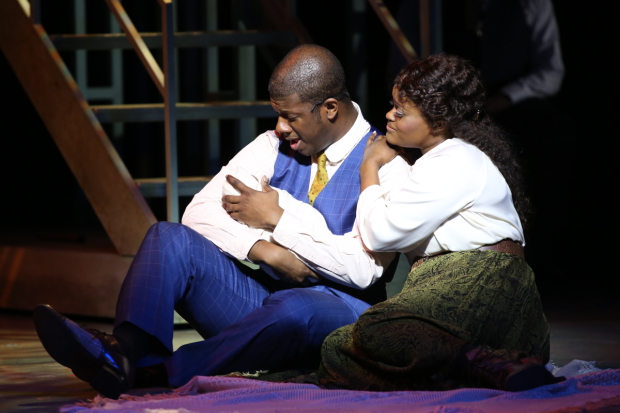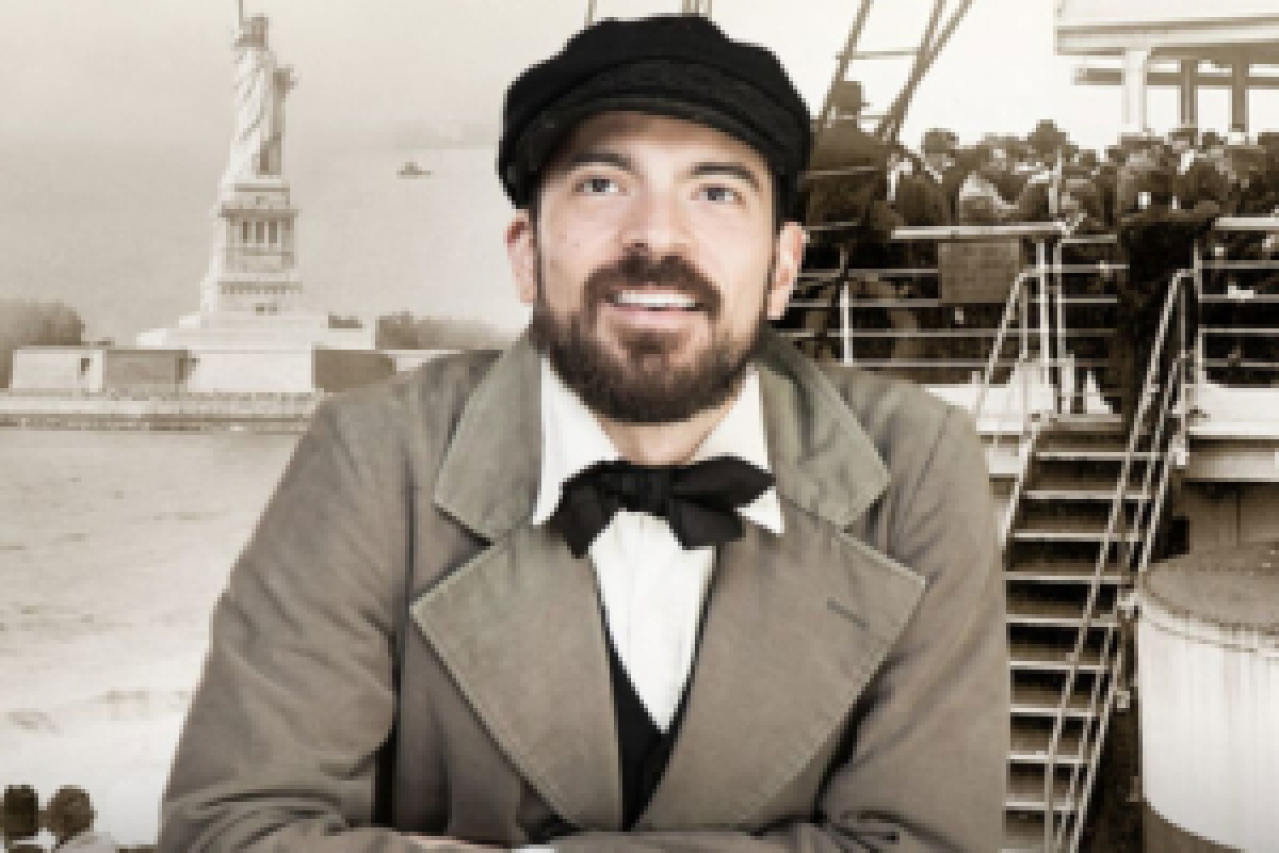Ragtime

(© Carol Rosegg)
Ragtime, currently enjoying an impressive revival at Ford's Theatre, won four Tonys during its 1998 Broadway debut production. Based on E. L. Doctorow's acclaimed novel, the expansive musical depicts the epic effort of three New York families to achieve the American dream at the turn of the 20th century. The country is rapidly changing, altered at a dizzying pace by the arrival of cars. Changes also come to the lives of three groups of people: an affluent white family, a brave Harlem musician, and an optimistic Jewish Latvian immigrant. Ragtime watches these individuals as their lives intersect and are altered by one another.
In addition to those three fictional characters, Ragtime uses famous people who lived at the time to anchor the show to its period. Harry Houdini, J.P. Morgan, Booker T. Washington, Admiral Peary, Henry Ford, Stanford White, and Evelyn Nesbit all play important roles.
The musical begins with a stodgy, racist character known as Father leaving his comfortable home and loving wife and sons in New Rochelle, New York, and going on an expedition to the North Pole with Admiral Peary.
When he returns one year later, the African-American jazz pianist Coalhouse Walker Jr. is playing his piano, and Coalhouse's girlfriend, Sarah, is living in his attic with her baby. Father is scandalized, but everyone else in the house has already adapted to this set up. When Coalhouse tries to drive into New Rochelle in his new Ford Model T, however, it appears that society has not evolved so quickly, and Coalhouse and Sarah pay the price for that fact. They are set upon by a band of ruffians, the car is trashed, and Sarah is killed.
There are many sources of passion in this Ragtime. In addition to Doctorow's compelling story, the vivid music by Stephen Flaherty and lyrics by Lynn Ahrens are beautifully matched to address one social issue after another: "The Crime of the Century" tells of the murder of Evelyn Nesbitt's wealthy lover by her husband; "Henry Ford" allows the inventor to explain his innovations; "What a Game" captures the spirit of baseball. Director Peter Flynn keeps the pace moving quickly from short scene to short scene and creates a dynamic energy to the musical's movement.
Kevin McAllister is brilliant as Coalhouse Walker Jr., a man who is totally devoted to the woman he loves and to his son. McAllister's rich voice is powerful, whether he is singing the boisterous "Gettin' Ready Rag" or the moving "The Wheels of a Dream," an anthem to his son's future. Nova Y. Payton is superb as his beloved Sarah. Part of the success of this musical depends on the couple's ability to convince the audience of their love and there is a definite sense of romance and trust between McAllister and Payton.
Jonathan Atkinson, is delightful as Tateh, the Latvian artist, who is so afraid of losing his daughter, Little Girl, that he ties her to his waist with a rope. Dulcie Pham is charming in this role. James Konicek plays the Father in the third important group, the wealthy white people from New Rochelle. He is particularly good when he realizes too late that his egotistical trip with Peary cost him his family. Tracy Lynn Olivera is skilled as Mother, who keeps the family together while her husband is away and who is able to recognize when their marriage is over. Felicia Curry is particularly moving as Sarah's friend, especially when Sarah is killed. Rayanenne Gonzales is a sociopolitical bombshell as Emma Goldman. Christopher Mueller is appropriately brash and egotistical as Harry Houdini. Jefferson A. Russell cuts an important figure, with a big, impressive voice, as Booker T. Washington.
Michael Bobbitt's choreography uses a lot of period dances — primarily rags — to demonstrate what the movements of that time might have looked like. Christopher Youstra's musical direction of the onstage, nine-piece orchestra enhances the action. Milagros Ponce de León's set includes a three-tiered moving wooden structure at the back of the stage, where the orchestra sits in the middle tier. Dancing and set pieces appear in front of this structure while Clint Allen's projection design allows the action to move from the gritty city to the idyllic suburbs. Wade Laboissonniere's costumes range from the lively to the extravagant, attiring the New Rochelle family in rich cream, black, and embroidered clothes, the Latvians in gray and mauve, and the Harlem contingent bright yellow and orange.
Ragtime contains sorrow and happiness in equal measure, making it a moving and credible document of an era when social, economic, and cultural differences were happening at a great rate. The wit and wisdom of Doctorow's original is only magnified by the boundless talent of the extraordinary soloists and chorus members, making this a must-see interpretation of a contemporary classic.











